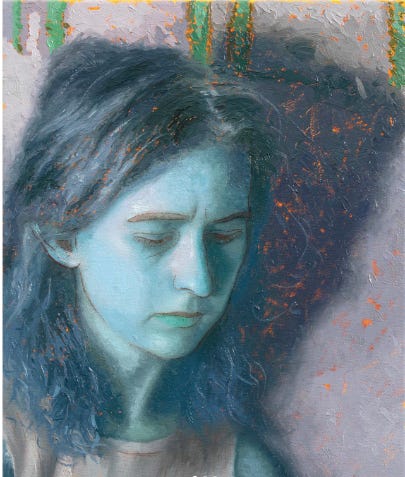The phrase ‘the quiet delights of joy’ is a phrase my friend Karen recently used.
I’ve been aware of the quiet delights of joy as I continue to populate The Mythopoetic Classroom.
It is the perfect old man’s project: gathering old artefacts, finding renewed (and sometimes unexpected) pleasure in watching how my younger self attempted to make sense of thorny experiences and thoughts, and, with my older self, noticing connections. Noticing threads.
I hope some of this comes through in all the postings I’ve done since the last newsletter.
There’s a new chapter (with audio recording) from The Worlds of Harriet Henderson. In this chapter there’s a description of joy. Joy for the teacher when things hum, when you’re in the zone. I remember times like that. They were exhilarating.
There’s a chapter (no recording) from School Portrait. It’s about Dan, who is (in my view at least) the central character of the book, as he struggles to learn to read.
There’s the story The Unnerving Unknown: a day in a teacher’s life (text and recording) inspired by teachers at Macquarie Primary. It describes the experiences of one teacher’s 24 hours, in the classroom and at home trying to write an authentic report on a unusual student.
Then there’s Performing Gender (text and audio). Some years ago I was asked to sit with a small group of Year 10 girls, to listen as they told story after story about their experiences of being girls in a co-educational government high school. I then wrote a story based on their experiences. This was such an enjoyable story to write. I’d love to see it performed one day!
Finally there’s The lecture (text and audio), a short story about a lecturer who wants to say things to his education students that are both philosophic and practical. How to show that to think carefully about education, to think philosophically, is to increase a teacher’s potency? It’s a story, not a lecture. But that’s its theme, I think.
If you read or listen to any of these, please consider either writing a comment (there’s a Comment section at the end of each of these), or maybe just click the LIKE button. It’s always good to get feedback.






Yes but it was so much more than 'reading the room' in that story. The writing was bringing into relation the different voices and sensibilities available in a poetry lesson - the poem, several individual students, teacher and mentor with what she knew about language. It was so much richer than 'a room'. But anyway Steve, thanks for the response and the opportunity to think more about the kind of reading a teacher must do (especially as she asks students to engage with something a bit hard like an Auden poem).
Hi Steve,
I haven't been able to read all of the pieces you have posted but I am moved by your synthesis of thinking, feeling and ... what is the right verb here .... sensing perhaps that undergirds teaching. The wealth of material, which is all different but revealing of common threads, would make a fantastic multimodal resource for pre-service teachers as they reflect on what has beckoned them into teaching. I am reminded of what another great teacher - Parker J Palmer - taught me through his publications: that we need to bring soul into role. This made all the expressiveness, randomness and hard work in my teaching (the whole kit and caboodle that made up my teaching) feel OK. In recent years, I have found inspiration in Winnicott's idea of the 'good enough mother' and applied it to teaching. What you offer in your vignettes as well as in the larger narratives like Harriet's is very good indeed.
Warmest of wishes.
Mary